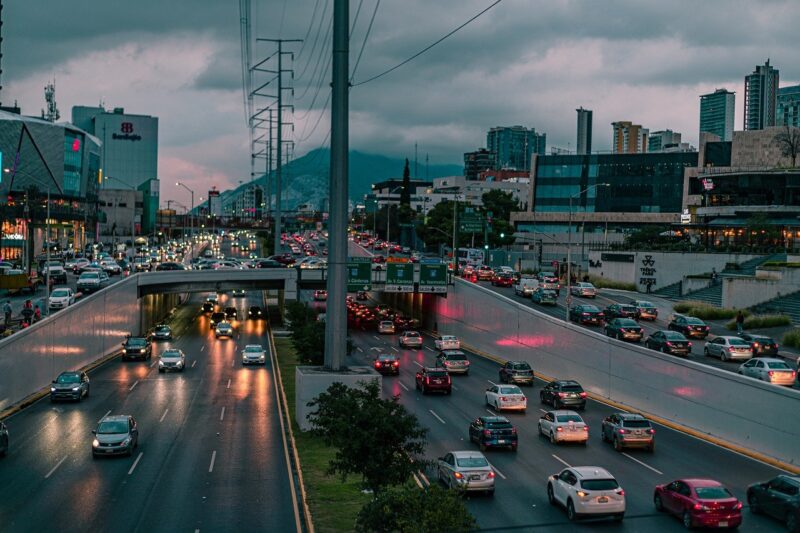Why Some Cities Have Abandoned Highways and Created Public Spaces Instead
November 12, 2024

In recent years, a growing trend has emerged in urban planning: the abandonment of elevated highways in favor of creating vibrant public spaces. This shift reflects a deeper understanding of urbanization, sustainability, and the quality of life for city residents. Cities around the globe, including New York, San Francisco, and Seoul, have taken significant steps to dismantle or repurpose their highways, turning these concrete monstrosities into parks, plazas, and bike paths.
1. The Rise of Highway Removal
Highway removal began as a radical idea, often associated with environmentalism and cutting-edge urban design. However, as cities grapple with traffic congestion, pollution, and the social isolation that highways create, the movement has gained momentum. The rationale behind this trend includes a desire to reconnect neighborhoods divided by highways, improve air quality, and create spaces that promote community interaction.
Cities like San Francisco, which removed a segment of the Embarcadero Freeway after the 1989 earthquake, witnessed increased foot traffic, improved local business revenues, and a thriving waterfront park in its place. Similarly, New York City has transformed sections of the elevated West Side Highway into the popular High Line park, demonstrating how creative urban planning can produce beautiful, useful spaces.
2. The Psychological Impact of Urban Design
The traditional view of urban living often prioritized automobile travel, which led urban planners to design spaces centered on car-driven infrastructure. However, this perspective often ignores the psychological and social effects of such designs. Highways tend to isolate communities, creating physical barriers that disrupt social interactions and reduce the accessibility of local businesses.
Studies reveal that cities designed with pedestrian-friendly spaces tend to foster stronger community bonds. Public spaces encourage people to congregate, share experiences, and participate in communal activities. As cities embrace a holistic approach to urban planning, public spaces serve to increase mental well-being, mitigate stress, and enhance overall quality of life. Transforming highways into parks or pedestrian paths plays a pivotal role in achieving these improvements.
3. Environmental Considerations
Environmental concerns have become a significant driver behind the movement to abandon highways. The urban heat island effect—where city environments become significantly warmer due to human activities—has been linked to extensive concrete surfaces and a lack of green spaces. Highways, being predominantly made of asphalt and concrete, contribute directly to this effect by absorbing and retaining heat.
By replacing or reducing highway space with parks or green areas, cities can improve local climates, enhance biodiversity, and promote a healthier environment. Additionally, activities like planting trees and the establishment of green roofs can absorb carbon dioxide and produce oxygen, making cities significantly more sustainable. The transformation of the former Route 66 into a trail network is an inspiring example of how environmental restoration can spring from the removal of highways.
4. Economic Revitalization
Another compelling reason cities are abandoning highways is the economic potential of repurposed land. Highways often take up vast amounts of prime real estate that could better serve the community. By transitioning highway land to parks or mixed-use developments, cities have seen notable increases in property values and local business development.
Take, for instance, the redevelopment of the former elevated Milwaukee freeway. Now transformed into a pedestrian-friendly area with parks and green spaces, local businesses have reported a boost in clientele, and property values in nearby neighborhoods have soared. Such initiatives show how converting neglected highway infrastructure into public spaces can both improve community well-being and drive economic growth.
5. Case Studies
If we look at current examples, cities like Seoul and New York City showcase successful transformations from highways to public spaces:
– Seoul’s Cheonggyecheon Stream: This urban renewal project saw an elevated highway replaced with a beautiful, multi-kilometer-long stream park. The area, now bustling with pedestrian traffic and recreational opportunities, has revitalized the local economy and improved quality of life for residents.
– New York’s High Line: Initially a freight rail line, the High Line has been redeveloped into an elevated park that attracts millions of visitors annually. Its success has spurred economic growth in surrounding neighborhoods, exemplifying how urban green spaces can attract tourism and business.
– San Francisco’s Embarcadero: After the removal of the Embarcadero Freeway, the area was converted into a thriving waterfront, leading to new public spaces featuring parks, shops, and restaurants. This revitalization marked a significant improvement in community engagement and economic dynamism.
6. Challenges and Criticisms
While the shift from highways to public spaces has many benefits, it isn’t without challenges and criticisms. Detractors often argue that such changes can lead to increased congestion in surrounding areas as traffic is redirected. Moreover, funding such transformations may be difficult without appropriate government and community support.
Cities must also consider the needs of all residents, ensuring these spaces are accessible and equitable. Successful highways removals often involve extensive community engagement, seeking input to reflect diverse needs and priorities. Failing to engage with communities can lead to developments that do not serve the broader population, resulting in gentrification without adequate planning for locals.
Conclusion
The trend of abandoning highways in favor of public spaces signifies a monumental shift in urban planning thought. By embracing these changes, cities are not only enhancing their environments but are also improving the lives of their residents. As urban centers continue to grow, prioritizing green and accessible spaces becomes increasingly vital. Ultimately, the transformation from highways to parks represents an investment in sustainability, community cohesion, and economic vitality. The ongoing examples around the globe serve as a testament to the positive outcomes achievable through innovative urban planning. As more cities explore abandoning highways, we can anticipate a future that prioritizes health, community, and our environment over car-centric models.








